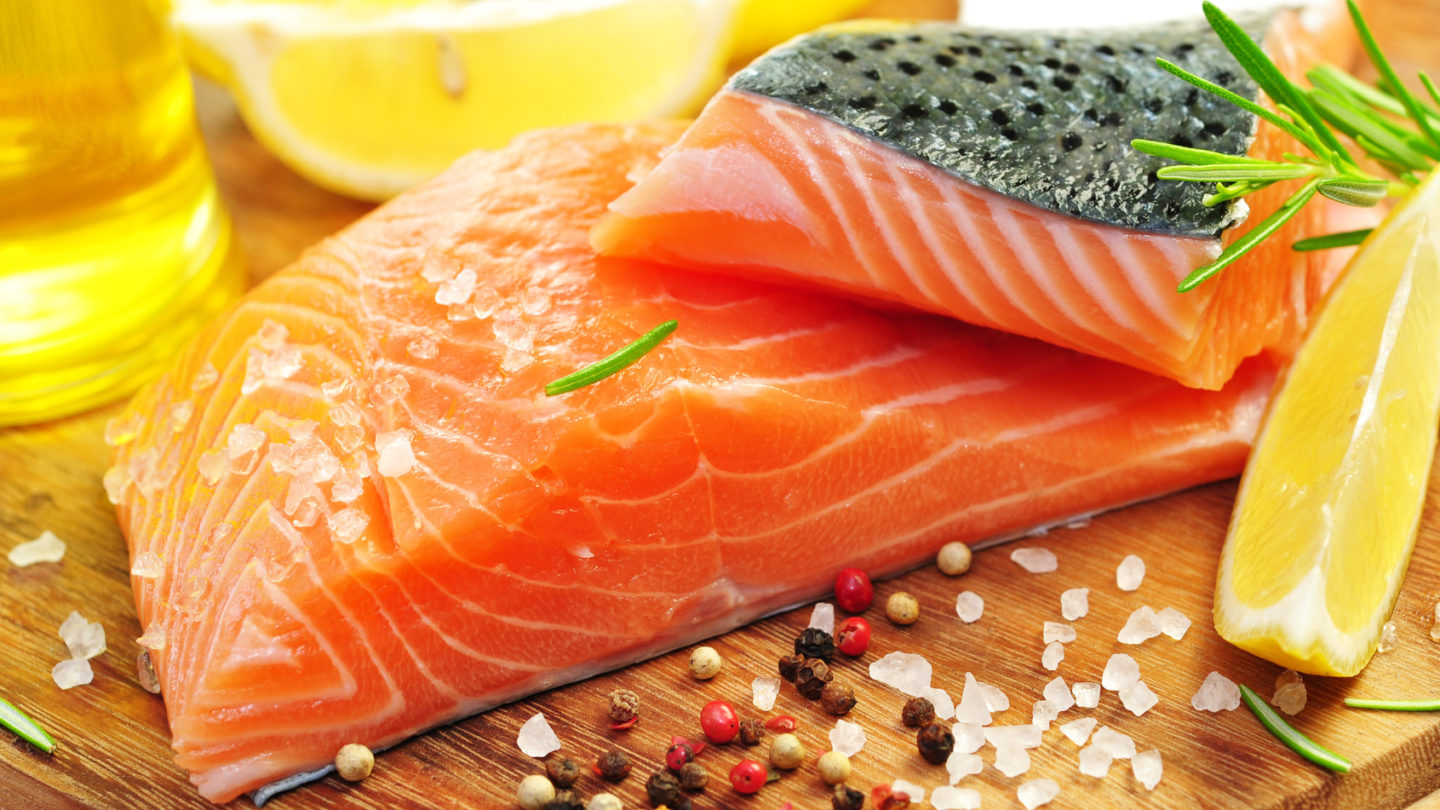Where can Omega-3 fatty acids be found?
A very good source for EPA and DHA – the two active Omega-3 fatty acids – is sea fish that is rich in fat. The recommended allowance can be met with only two portions of mackerel, herring, tuna, salmon, or sardines a week. This fish can be freshly prepared, smoked, or eaten as in preserved form.
However: not everyone manages to eat fish regularly. Many people do not like fish or do not tolerate it. Food enriched with EPA and DHA, like baked goods, margarine, oil, and special fish products, as well as dietary supplements like sea fish oil/salmon oil capsules or capsules with DHA extracted from microalgae, can be considered as alternatives or supplements for fish.
ALA can also be taken with selected vegetable oils like linseed, walnut, and rapeseed oil. From ALA, our bodies form EPA, but only to a small percentage (under 5 percent) according to experts. This lies on the competition of Omega-6 fatty acids – an additional family of polyunsaturated fatty acids: the more Omega-6 fatty acids we consume (for example, with sunflower seed, thistle, and soy oil), the less ALA is converted into the biologically more active EPA. For this reason, it makes sense to take fewer Omega-6 fatty acids and more Omega-3 fatty acids, mainly consuming them directly as EPA and DHA at best.
The recommendation for the consumption of fat is thus as follows:
- fewer saturated fatty acids from animal fats like butter, bacon, sausage, cream, and so on, from solid vegetable fats like coconut or palm fat, and from (partially) hydrogenated fats
- few to moderate sunflower seed, thistle, soy, corn, wheat germ oil, and other oils that are rich in Omega-6 fatty acids
- instead, preferably olive and rapeseed oil and, in any case, enough EPA and DHA from fish and other foods enriched with EPA and/or DHA


